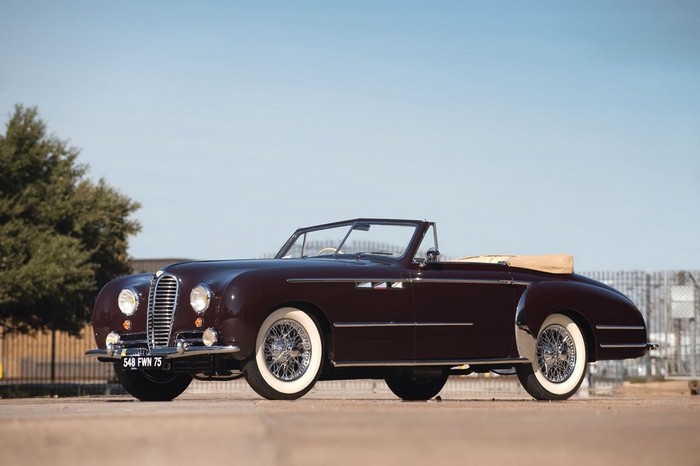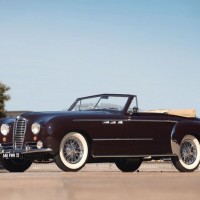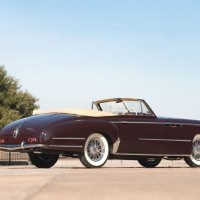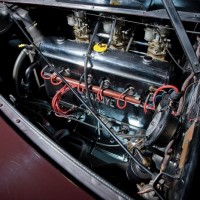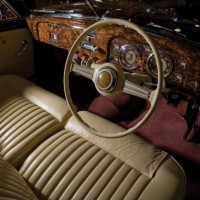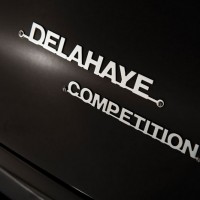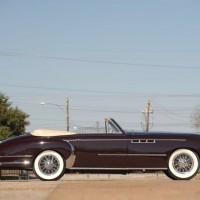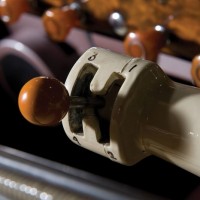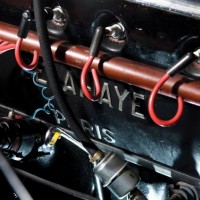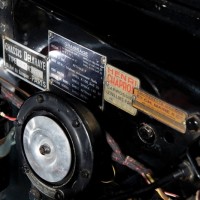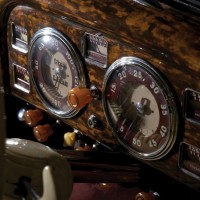SCM Analysis
Detailing
| Vehicle: | 1951 Delahaye 135M Cabriolet |
| Number Produced: | 1,500 |
| Original List Price: | $5,000 |
| Tune Up Cost: | $1,500 |
| Chassis Number Location: | Stamped on left frame rail and on chassis plate |
| Engine Number Location: | Tag on left front of engine; casting number on lower left block |
| Club Info: | Club Delahaye |
| Website: | http://www.clubdelahaye.com |
| Alternatives: | 1949 Alfa Romeo 6C 2500 SS, 1951 Mercedes-Benz 300S coupe, 1951 Delage D6 coupe |
This car, Lot 351, sold for $227,505 (£141,500), including buyer’s premium, at the Bonhams Surrey, U.K., sale on December 3, 2012.
I’ve always been a great fan of the French Grand Routiers — both the pre-war variety, which have many adherents, as well as the post-war flavor, which have, not entirely rationally, rather fewer acolytes. What’s not to love about a Grand Prix and Le Mans-winning chassis and engine wrapped in sexy aerodynamic Figoni et Falaschi teardrop coupe or voluptuous Saoutchik roadster bodywork?
In some cases, the very racers that took the checkered flag lost their homely, utilitarian work clothes and gained one of those haute couture frocks for cavorting about at concours d’elegance, the casino and the opera.
With a production life spanning a 20-year stretch, the 135 is notable by any measure even when you subtract the years 1940–45. Its design was still impressive in 1951, when this car was built, particularly in the case of the three-carburetor “competition” specification. Of course, most of the post-war bodies were a bit heavier than many of the pre-war examples — with some resulting penalty in performance — but given the contemporary choices available in the post-war market, the Delahaye delivers a drive that is more than entertaining.
The coachbuilding firm of Henri Chapron was never accused of going too far with style in pursuit of fashion. The venerable firm provided bodies for France’s leading luxury cars in the 1930s. These cars had a quiet, solid simplicity that carried more than a hint of German seriousness about them. After World War II, things were a bit different, and in the prevailing mood, simple found more traction than showy, which played to Chapron’s strengths.
This is not to say their designs of the period weren’t fashionable. As it happens, the ultra-modern mode of the moment was the “pontoon” body. Slab-sided and clean, eschewing any hint of the separate fenders of the pre-war age, it fit well with Chapron’s natural tendency toward relatively unadorned design and suited the new style well.
Not a time for showing off
I’ve written in these pages before about the common belief that unfriendly “tax-and-spend” post-war governments in France killed its luxury car market and manufacturers. It’s probably true that the French domestic market was somewhat depressed by higher taxes on large-displacement engines, but face the facts — the folks with enough money to buy a Delahaye wouldn’t really worry about the tax rate.
The reality was that it was not very fashionable in most of Europe to display wealth until the economic boom of the late 1950s took hold. More often than not, the wealthy didn’t want to be seen as flaunting their assets. The number of large American cars that were sold in France in this time is further evidence that many chose to hide behind the wheel of a Yank tank, which the average Jean wouldn’t know was expensive.
It was really the small-minded management of the French luxury companies that couldn’t see that across the Atlantic — the exuberant U.S. market of the late 1940s and early 1950s — was where their salvation might have been found.
Sales show upward trend
This Delahaye appears to be a lovely example, an older restoration that still appears to present quite well. When attorney John O’Quinn bought it in January 2005 at RM Auctions’ Phoenix, AZ, sale, the restoration was a few years old. He paid $130,000, and after his death, the car was sold for $156,384 at the RM Auctions Monaco sale in May 2010.
The buyer then was the seller this time around, and the $204,753 he likely brought home as his net represents a $48k margin — note I do not say “profit,” as we don’t know what the seller’s expenses were — and a 45% increase in the purchase price over two years. Not bad for a car with an older restoration — and that is supposed to be one of the orphan stepchildren of the model.
The ultimate-spec pre-war 135MS sells at a minimum of $1m. Would you want much of the same experience for $800k less? I would, especially as a notice in the online catalog mentions that it was also being sold with an accepted entry to the 2013 Mille Miglia Storica. I’d call this Delahaye well bought — and a sign of a maturing and evolving collector community, one which better recognizes intrinsic worth. ?
(Introductory description courtesy of Bonhams.)
